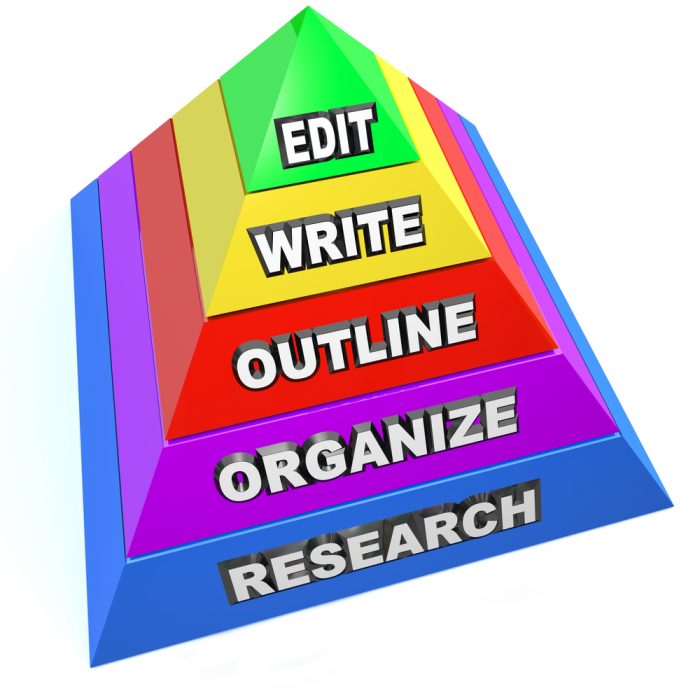
A critical analysis essay can be a very intimidating assignment, simply due to the fact that it sounds complex and serious. And in some ways it is—but it actually can be more fun than you would expect. A critical analysis essay means that your teacher is expecting some pretty heavy lifting. If the essay is about a book, poem, film or work of art, it’s not enough for you to have just read it (or watched/looked at it) and understand it. This essay asks you to do much, much more than show that you know what something was about.
A critical analysis essay means that you have spent time and looked deeply at something, trying to glimpse into its soul. Okay, well perhaps not that deeply, but your goal is to show that you have scrutinized a work of literature or art so closely that you feel confident in analyzing it within the confines of a thesis (and supporting argument). In many ways it’s a formidable task. But it also one that can be surprisingly enjoyable as it gives you the space to really get into the teeny, tiny specifics of your own opinion. Most students have the potential to write fantastic critical analysis essays—one they get a little guidance. By the time you’re done reading this article, you will feel comfortable and confident that you will be able to fulfill all your teacher’s requirements to compose a successful critical analysis essay and earn a passing grade.
Table of Contents
A critical analysis essay is an essay which seeks to complete two distinct tasks in one essay. First, you need to pinpoint what the author or creator is attempting to do: what argument/suggestion are they making about the world, human nature or society? The second thing you are doing is making an assessment about their thesis. Thus, you are showing your teacher what the writer or artist is attempting to do, and then throwing in your two cents (using your analysis prowess). Your two cents offer your opinions about the ideas this creator has posited through their work.
This type of essay is the classic kind of essay that sounds complex, but actually isn’t that bad. Think of this essay as the “backseat driver” type of essay. Everyone has a friend who when they ride in your car, points out what you’re trying to do in the way you’re driving and the route you’re taking. However, this friend is often there to offer commentary about these choices you’ve made, often unsolicited. Similarly this type of essay can also be viewed at the “cinema lobby” essay when a movie finishes. Patrons of the theatre are often heard talking about the film, sure some of them are talking about simply whether or not they liked it. However, many are making commentary that is just like a mini critical analysis essay. You might hear something like, “he [the director] was trying to make a summer action blockbuster that was Die Hard meets the Dark Knight, but he failed because it made no sense.” Cinema lobby commentary like this highlights what the creator was attempting to achieve, and what the issue was with achieving it. Similarly this commentary can be positive—it doesn’t always have to be negative. You might hear people in the lobby of the theatre saying, “they were trying to make one of the old classic love stories and it totally worked because they created that old-school feel.” This commentary is also a form of mini-critical analysis, as it too pinpoints what the film was attempting and explains how they succeeded.
One of the most important aspects of this type of essay is that you stay organized. Once you state what the creator was attempting to achieve in your introduction’s thesis, the rest of the essay is mono-focused. The bulk of the essay is just you expressing your opinions, using evidence that the work under examination provides.

Crafting a simple outline before you begin writing your critical analysis essay is useful not merely because doing so falls into the category of a “good idea.” It’s a useful thing to do because in this type of essay you really are defending a compound thesis: your thesis posits what the creator is trying to do and whether or not they are successful (and why). There’s a lot to juggle and a simple outline can keep you on course.
A good outline can also help you keep in mind that your job is to assess the thesis/intention of the work. It can be too easy sometimes to fall into the trap of summarizing or describing the work and explaining whether or not you liked it. Be very careful in this regard. It’s important to offer details from the work in question, but you must do so with great discrimination. The details provided should be just used to prove or disprove your assessment of the author or artist’s intention. Hence, taking a minute to craft a simple outline can prevent you from falling into the trap of merely summarizing—a trap many students unfortunately fall into.
I. Paragraph One
a. Hook sentence (quote, statistic, anecdote, etc.)
b. Discussion of theme.
c. Introduce work in question that the essay will discuss.
d. State thesis.
II. Paragraph Two
a. Explain the creator’s thesis, intention or overall commentary. Use evidence from the text or piece.
III. Paragraph Three
a. Explain why this commentary or intention is successful or unsuccessful. State clear reasons from the text or artwork.
IV. Paragraph Four
a. Explain why this commentary or intention is successful or unsuccessful. State clear reasons using details from the text or artwork.
V. Paragraph Five
a. Restate your thesis using new language.
b. Summarize your main points in a non-repetitive manner. .
c. Connect the theme or one of your points to a more universal concept or “bigger picture” idea.

Finding a good topic is honestly half the battle when it comes to crafting a solid critical analysis essay. In this case a good topic equals one that you have sincere interest in. If you find a topic that you are genuinely interested in, the process of researching and writing will be very pleasant and organic. You will actually want to share your opinion on the work, and often you will find that you don’t have to do that much research. Your genuine interest in the subject matter will allow you to flex your pre-existing knowledge.


Stuck Writing Your Exemplification Essay?
Most people have heard the expression, “all art is a product of its time.” This is true as it is also an undeniable fact. But what about art that is created in this modern era in an attempt to engage in commentary or tell a story about the past? How can a creator deftly balance an accurate portrayal of times past, in a manner that fully engages a modern audience? The film The Witch, written and directed by Robert Eggers (2015), is a period horror film that is able to both engage audiences in a truly terrifying narrative while still maintaining accuracy to the 17th century era and setting. The film is a new England folk tale that tells the story of a family terrorized by a the presence of evil near their home, that might be real or simply their collective fear or imaginations. The film has a daunting task before it: horror film fans are jaded bunch and many of them have been desensitized to typical scares. Many film-goers have strong opinions about period films, period. However, Eggers’ film is so strong and is able to create a period horror for a modern day audience using ambiguity and atmosphere as the source of fear, along with primordial terrors that are universal to the human condition. This paper will explore the mostly effective ways it accomplishes this.
Eggers relies heavily on the precariousness and danger of the family’s environment as a means of creating tension from the very start of the film. From the beginning of the film, we see that the family has been banished from their nearby community, as a result of a disagreement in an interpretation of the Bible. This creates instant environmental uncertainty, which the filmmaker uses very effectively. We see the family alone, on the edge of a very dark secluded forest, where they work their farm. These images alone put the viewer at a sense of unease. It is the 1600s and the viewer understands that their existence is very precarious: there are a variety of threats that could very quickly put their lives in danger. These threats are amplified given their isolation. When the viewer observes the family at night, Eggers very deftly uses sounds of the howling wind outside to help heighten the fact that the family is alone and at the mercy of the elements. Eggers, by setting the family up in a very hazardous environment from the start, creates a strong setting for horror to creep in.
In conjunction with this isolated, unstable environment, Eggers introduces the threat of the unknown and the uncanny. The mother of the family gives birth to another child and that child abruptly goes disappears when the eldest daughter is playing peekaboo with it. The audience has witnessed that something unexplained and mysterious has happened to the child, but the characters in the film struggle with finding an appropriate explanation. The eldest daughter is suspected, as is a possible wolf that perhaps took the child. This disturbing incident introduces an element of the uncanny to the characters, causing them a greater sense of distress. This increased distress makes their very safety and existence seem even more perilous and at great risk. Additionally, the spectator did see a very brief image of a hooded figure running off into the woods with the baby, so the audience knows there is a very real threat in that exists near the family’s home. This knowledge intensifies the audience’s concern for the safety of these characters, particularly when one sees them struggle to find an explanation for everything they have gone through.
Eggers increases the threat of danger and anguish when their youngest son, Caleb goes missing. He returns to the family, suffering from mysterious ailments and seems to be in some sort of fanatical delirium. By balancing the family’s grave concern and suffering over his condition with the audience’s knowledge that the child was abducted by a witch, the filmmaker creates a more acute sense of worry. The spectator knows that there is something truly wicked afoot that is targeting this family and that wishes to do them harm. The parents see their son suffering immensely and are unable to help him as he grows more and more frenzied. The audiences is forced to watch this, knowing that there is something far more evil afoot, and this causes the spectator deep anxiety, as the spectator is unsure of what will happen. This anxiety touches upon a very human experience of fear of the unknown and the mysterious. This fear becomes particularly aggravated when the characters are forced to deal with situations that are rapidly spiraling out of their control. When the eldest daughter is the sole remaining member of the family left after the parents are both killed, the audience soon discovers the ancient source of the witchcraft. The eldest daughter, in joining a coven of witches at the end of the film, and levitating high above the tress, symbolizes the triumph over evil over good.
In summary, Eggers’ The Witch is a film which successfully meets the challenge of telling an antiquated tale, with antiquated language in an antiquated setting in a riveting manner, triggering a deep investment of the audience. Despite the period settings, the unfamiliar challenges of the characters, and the old-fashioned colloquialisms, the audience becomes tremendously invested in this story. More importantly, the audience experiences heightened anxiety and concern throughout the story, forcing them to watch the characters struggle with the sinister ambiguity they are constantly dealt with. Essentially, the film deals with the primordial fears of the human race: that there is something lurking in the dark that is watching us and invested in our destruction.
Thus, crafting a critical analysis essay shouldn’t feel like drudgery. This is your time to shine: you get to show off the nuances of your own opinion. A critical analysis essay lets your voice be heard in a way that shows off your singularity. You posit what you think the creator is trying to accomplish (knowing others might disagree) and then you critique how successful this person has been. Your critique should include details of the work to support your opinion. The critical analysis essay really does give you a chance to flex and show off a little bit how much you observe and notice and the conclusions you reach. This type of essay really is a celebration of your attention to detail and the ideas drawn from these conclusions.
These essays do require that you reach a delicate balance, so if you ever get stuck or aren’t sure of what you’ve written, don’t hesitate to reach out. Our writers have collectively written thousands of these types of essays and are full of sage advice for guidance. Sometimes you might just need someone to help direct what you’ve already written or help direct where you’re thinking of going. We know how tough these can be and how strict teachers can grade, so we are always happy to help.

Comments